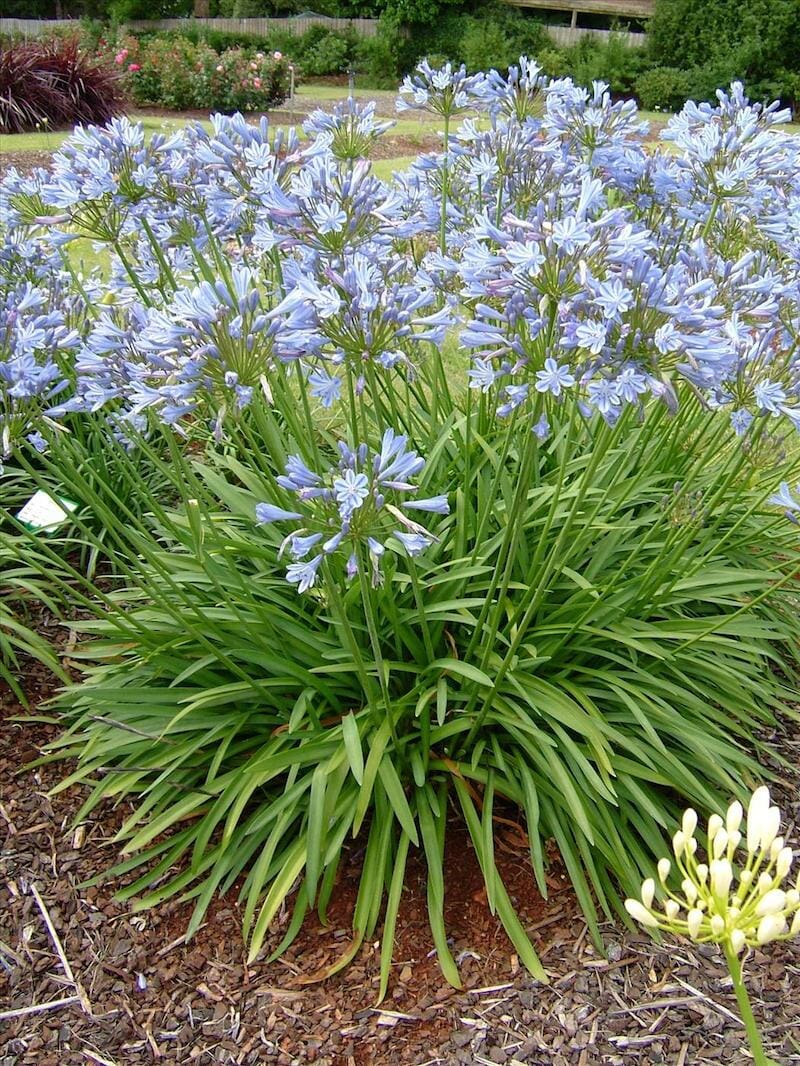Agapanthus Treatment Tips for Lush and Vibrant Flowers
Agapanthus Treatment Tips for Lush and Vibrant Flowers
Blog Article
Letting Loose the Secret to Effective Agapanthus Growing: Advice for a Flourishing Garden
In the world of horticulture, cultivating agapanthus efficiently calls for a calculated method that incorporates numerous elements of plant care. By understanding the nuances of agapanthus growing, one can create a setting where these plants flourish and bloom perfectly.
Planting Agapanthus: Best Practices
When growing Agapanthus, proper dirt preparation is vital for making certain effective growth and advancement of these beautiful blossoms. Agapanthus, commonly called Lily of the Nile or African lily, thrives in well-draining dirt with a slightly acidic to neutral pH degree - Agapanthus. Prior to planting, it is critical to amend heavy clay soils with raw material such as garden compost or peat moss to boost drain and give crucial nutrients for the plants
To grow Agapanthus, select a place that gets full sunlight to partial color, as this will promote healthy growth and plentiful flowering. Dig a hole two times the diameter of the plant's root round and position the Agapanthus at the exact same deepness it was formerly expanding. Gently backfill the hole with soil, pushing down securely to remove any type of air pockets around the origins.
Water the newly grown Agapanthus thoroughly and remain to keep the soil uniformly moist, specifically throughout the plant's energetic expanding period. Agapanthus. Using a well balanced plant food once a month can further support the plant's development and blooming. By complying with these finest techniques for planting Agapanthus, you can create a sensational display screen of these exciting blossoms in your yard
Ideal Soil Issues for Agapanthus
For optimal development and flowering success of Agapanthus plants, guaranteeing the soil conditions are perfect is essential. Agapanthus favors soil that is rich in nutrients, so integrating a balanced fertilizer during the expanding season can promote healthy and balanced growth and lively blooms.

Watering and Fertilizing Tips
To guarantee healthy and balanced growth and lively blossoms, correct watering and fertilizing methods are necessary for successful Agapanthus farming. Agapanthus plants profit from regular watering, particularly during the expanding season.
When it concerns fertilizing Agapanthus, a well balanced fertilizer with equivalent parts nitrogen, phosphorus, and potassium can be applied in the spring to advertise healthy and balanced development and blooming. Slow-release plant foods are optimal for offering nutrients slowly over an extended duration. Avoid over-fertilizing, as this can bring about excessive vegetation growth at the cost of blossoms.
Additionally, including organic matter like compost right into the dirt can improve nutrient degrees and improve soil structure, assisting in the overall wellness of the Agapanthus plants. By following these watering and fertilizing pointers, garden enthusiasts can ensure their Agapanthus plants moved here prosper and generate magnificent screens of blossoms.
Pruning and Deadheading Methods
Correct pruning and deadheading methods play a critical role in keeping the health and looks of Agapanthus plants, complementing the necessary methods of watering and fertilizing for successful cultivation. Pruning Agapanthus involves eliminating spent flower heads, yellowing or dead fallen leaves, and general shaping of the plant to promote better development. Deadheading, the procedure of removing faded flowers, not just boosts the plant's look yet also motivates more growing.
When deadheading Agapanthus, it is a good idea to trim off the blossom stem at the base utilizing sharp, tidy shears. This process redirects the plant's power from seed manufacturing back into root and foliage growth, promoting a healthier and a lot more durable plant. Routine deadheading can prolong the growing period of Agapanthus and stop self-seeding, which can cause congestion.
In terms of pruning, Agapanthus usually benefits from a light trim after blossoming to clean up the plant and urge fresh development. Reducing useful content the spent flower stems and getting rid of any dead or damaged vegetation assists maintain the plant's vitality and total appearance. Nonetheless, it is necessary to avoid reducing right into the crown of the plant, as this can damage its health and wellness.

Protecting Agapanthus From Pests and Diseases
Executing reliable insect and illness monitoring strategies is vital to safeguarding the health and wellness and vigor of Agapanthus plants in cultivation. One typical insect that influences Agapanthus is the Agapanthus borer, a caterpillar that tunnels into the plant, triggering damages to the leaves and flowers.
In addition to insects, Agapanthus are susceptible to conditions such as root rot and fungal leaf places. By remaining attentive and addressing pest and illness problems quickly, gardeners can help their Agapanthus flourish and flourish.

Verdict
Finally, effective farming of agapanthus requires correct planting strategies, perfect soil conditions, ample watering and fertilizing, find more routine pruning and deadheading, and protection from diseases and pests. By adhering to these techniques and suggestions, garden enthusiasts can ensure a growing garden full of attractive agapanthus flowers. Agapanthus. Bear in mind to maintain constant treatment and interest to information to promote the wellness and long life of these stunning plants
When growing Agapanthus, proper soil prep work is crucial for making certain successful growth and development of these stunning blossoms.Water the newly planted Agapanthus extensively and proceed to maintain the soil uniformly wet, especially throughout the plant's active expanding period.For optimal growth and flowering success of Agapanthus plants, making sure the dirt problems are perfect is crucial. When hair transplanting or growing Agapanthus, ensure the soil is well-prepared to supply the required foundation for the plants to develop themselves efficiently. One typical pest that impacts Agapanthus is the Agapanthus borer, a caterpillar that tunnels into the plant, creating damage to the fallen leaves and flowers.
Report this page